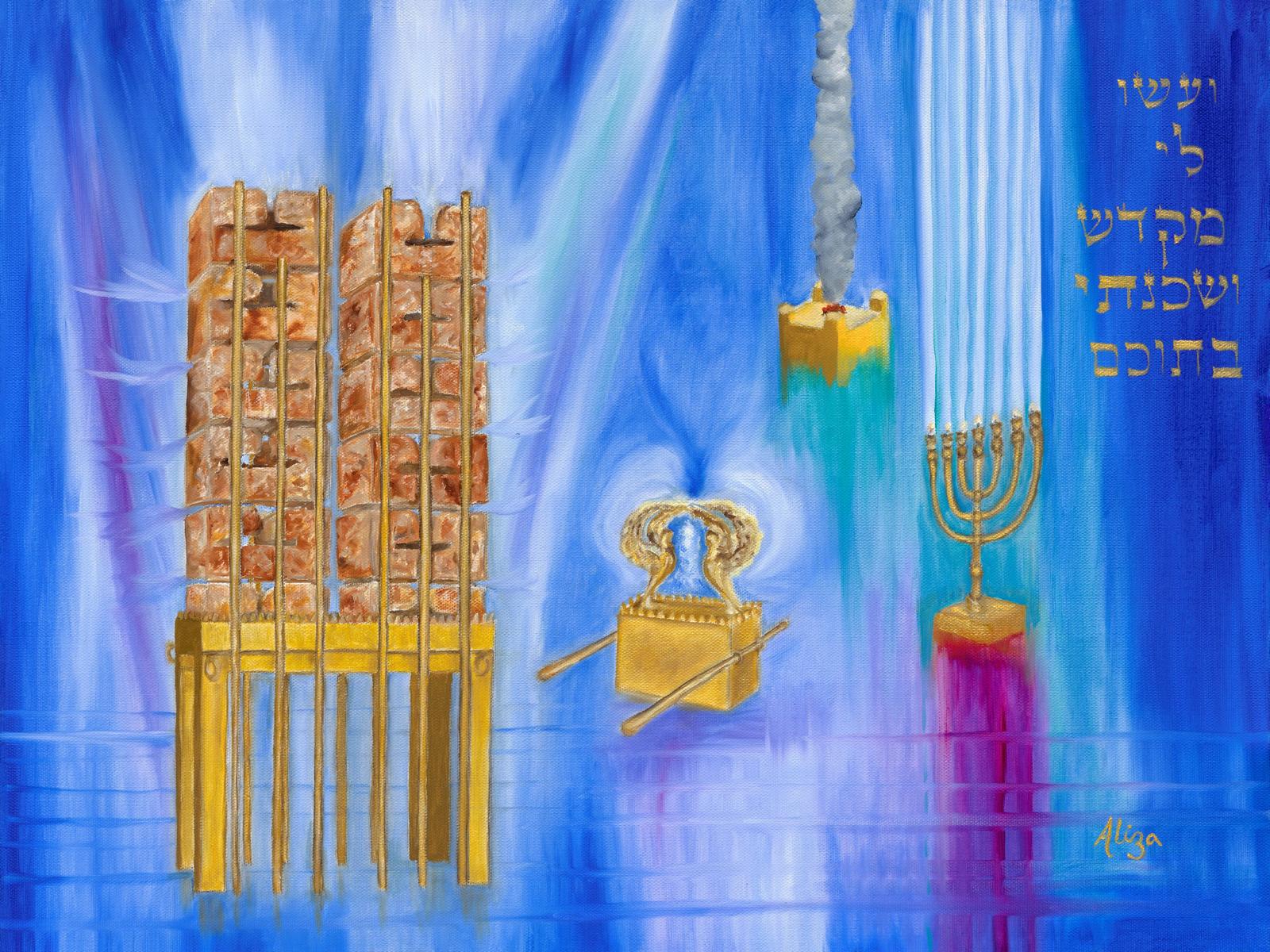The Table
$0.00 – $2,852.00
Oil on canvas (original dimensions 18″ x 24″)
This painting is part of a series commissioned by Maimonides Elementary School, which includes depictions of the Ark, the Menorah, the Table, and the Altar. For each recipient, the vessel most personally meaningful to them was enlarged.
When I began this commission, I immediately sought deeper understanding of the Mishkan and turned to The Mishkan: The Tabernacle by Rabbi Avraham Biderman (ArtScroll), immersing myself in research before lifting a brush.
What captivated me about the Table was its role in holding the Lechem Hapanim—literally, “bread of faces” or “surfaces.” This uniquely shaped, artisan-crafted bread miraculously remained fresh from week to week, serving as a source of spiritual nourishment for the Kohanim (priests).
As Reb Yaisa taught: “This table stood inside the Mishkan, and the heavenly blessing rested upon it, and through it came sustenance for the entire world” (Zohar Terumah 153b).
Every detail in the Mishkan is rich with meaning. The palette for this series—gold, turquoise, purple, and scarlet—was inspired by the colors of the Kohanim’s garments, chosen to echo the spiritual depth and beauty of these sacred vessels.
This painting is part of a series created for Maimonides Elementary School , which includes depictions of the Ark, the Menorah, the Table, and the Altar. Depending on the intended recipient, the relevant vessel was enlarged to highlight its personal significance.
Just as the Torah was created before the world itself, so too, when it came to constructing the Mishkan, the command to build the Ark came before the other vessels (Shemos Rabbah 34:2).
Rashi explains that Bezalel made three arks: two of gold and one of wood. Each had four walls and a bottom, open at the top. He placed the wooden ark inside the larger golden one, and then placed the smaller golden one inside the wooden one. He then overlaid the rim with gold, so that the Ark was covered with gold both inside and out.
“From within and from without you shall cover it” (Exodus 25:11). Rava taught: this teaches that any Torah scholar whose inside does not match his outside is not a true Torah scholar (Yoma 72b).
Every detail of the Mishkan was imbued with profound meaning. The colors of the Kohanim’s garments—gold, turquoise, purple, and scarlet—were the palette I chose for this series, reflecting the spiritual depth and beauty of the original vessels.


